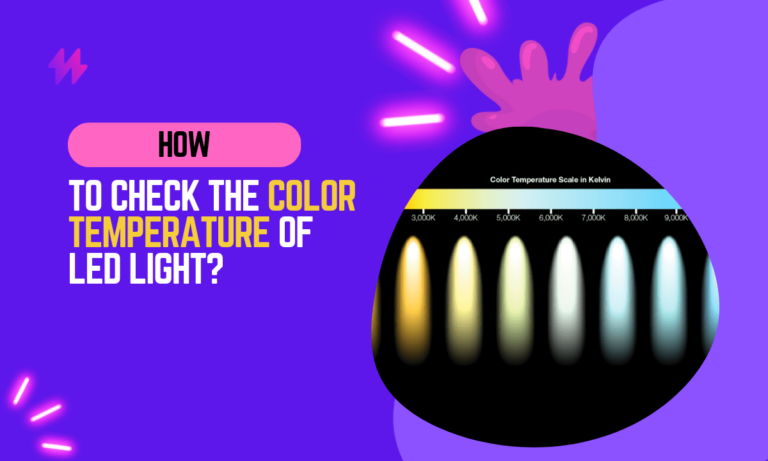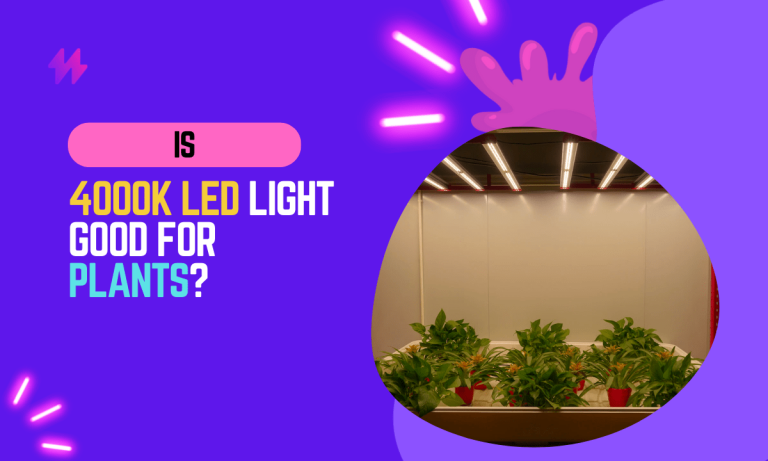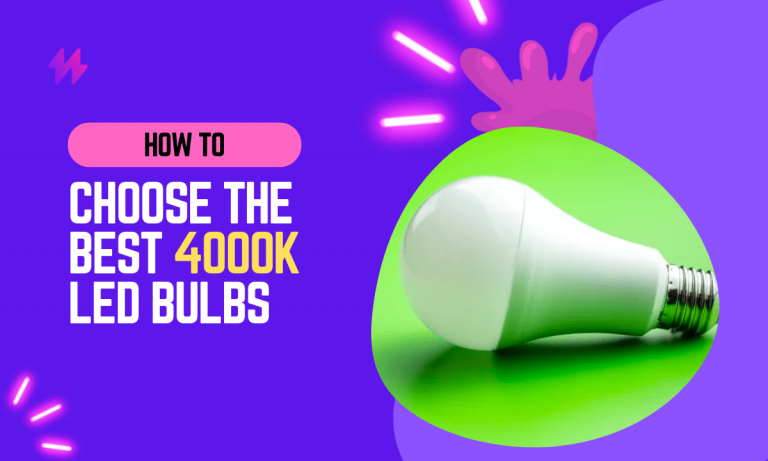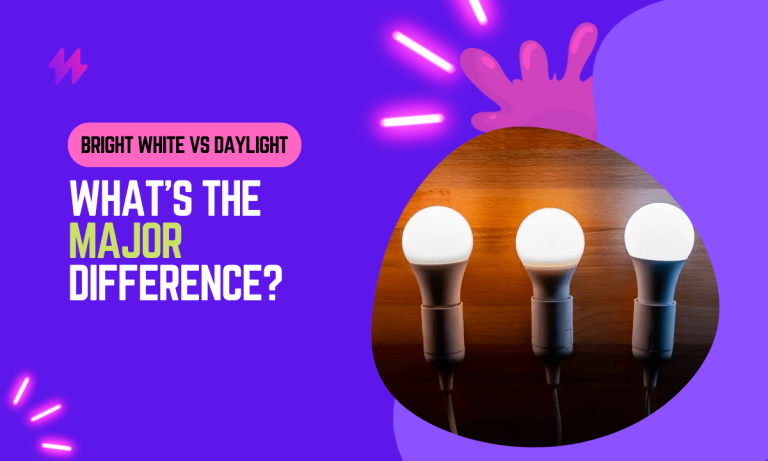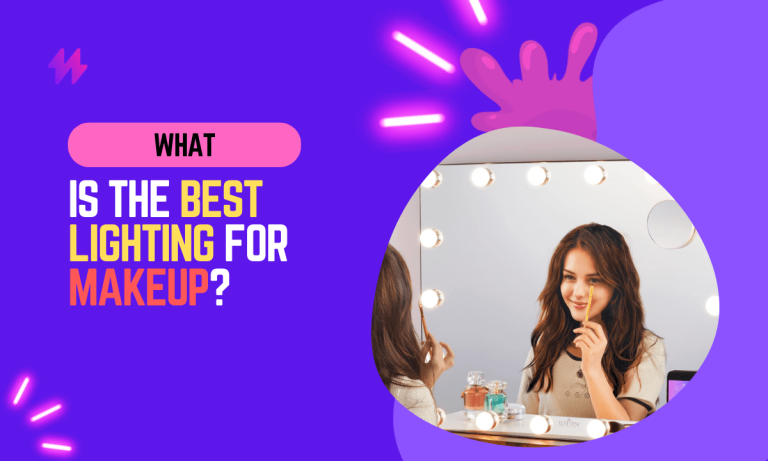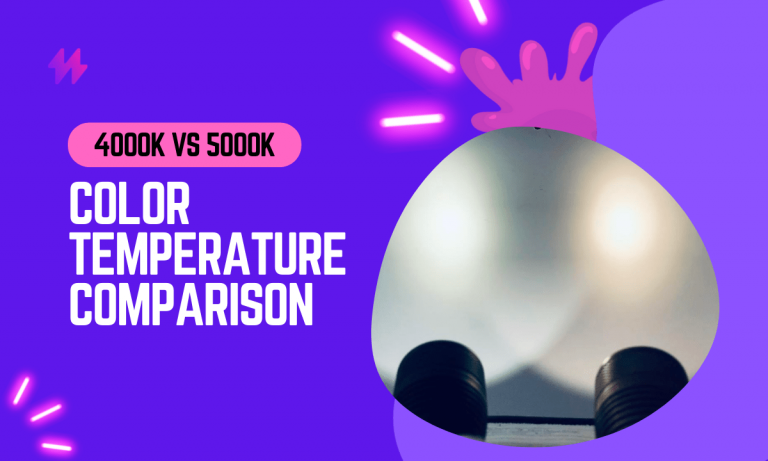5000K vs 6500K Lighting: Which is the Best Light Color?
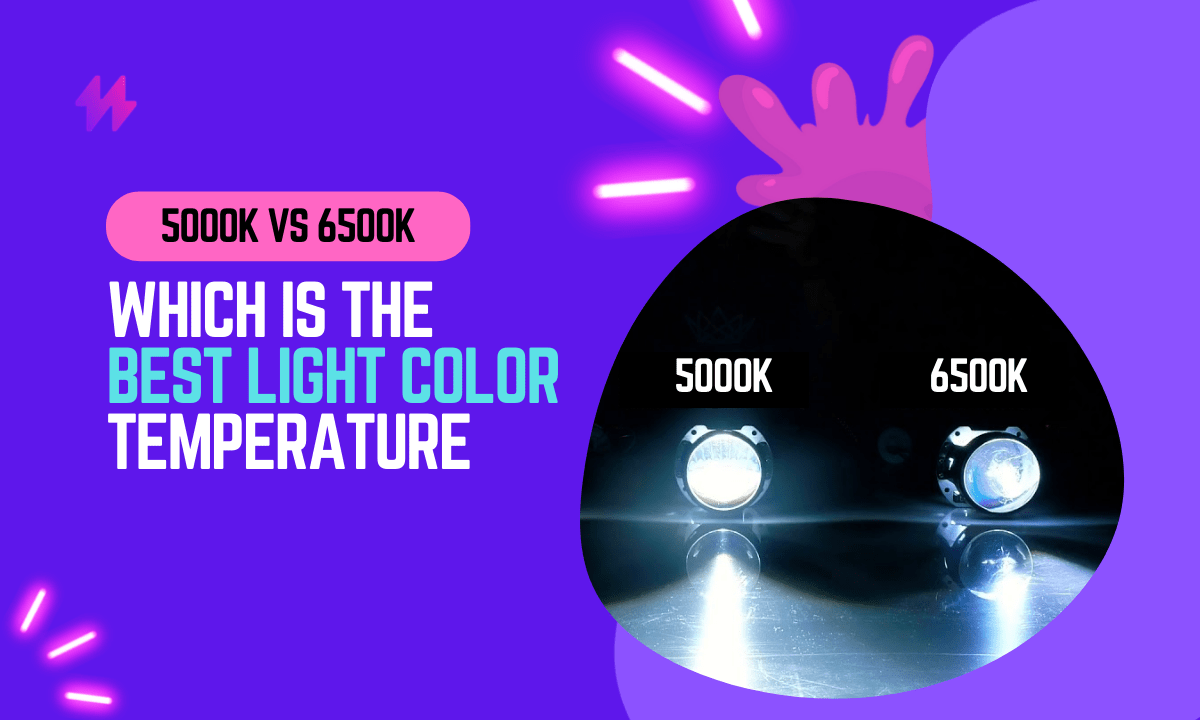
Lighting is an essential element that can make or break the ambiance of a room. It can set the mood, enhance the atmosphere, and affect productivity. Choosing the right lighting for your space is crucial, and one of the most important factors to consider is color temperature.
Color temperature refers to the color of light that is emitted from a light source, measured in Kelvin (K). The higher the Kelvin rating, the cooler or bluer the light appears, while lower Kelvin ratings produce a warmer or yellower light.
Two of the most common color temperatures used in lighting are 5000K and 6500K. In this blog post, we will compare and contrast these two lighting options to help you determine which is the best choice for your needs.
5000K Lighting Color Temperature
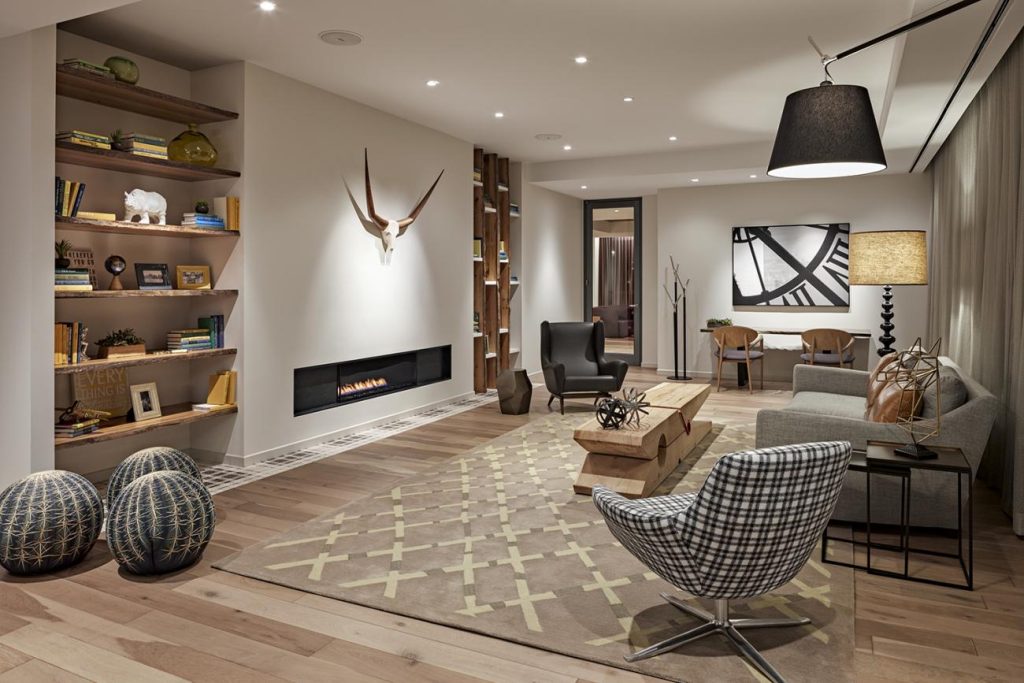
5000K lighting is a type of cool white light that has a slightly blue tint. This type of lighting is commonly referred to as “daylight” because it mimics natural daylight. Daylight is typically around 5000K-6500K, which is why 5000K lighting is ideal for indoor spaces that require bright white and crisp lighting.
Advantages of using 5000K lighting in your space:
- Promotes productivity: 5000K lighting has been shown to promote alertness and productivity, making it ideal for workspaces such as offices, studios, and workshops. The bright, crisp light can help to reduce eye strain and headaches, allowing you to work for longer periods of time without feeling fatigued.
- Enhances color accuracy: 5000K lighting provides a neutral white light that enhances color accuracy. This makes it ideal for spaces where color accuracy is important, such as art studios, photography studios, and makeup rooms. With 5000K lighting, you can see colors more accurately, which can help you to make better decisions when it comes to color coordination and matching.
- Creates a modern and clean look: 5000K lighting provides a cool and modern look to any space. It creates a crisp, clean, and refreshing atmosphere, which can make your space feel more modern and up-to-date.
- Provides a sense of security: 5000K lighting is ideal for outdoor spaces such as parking lots and garages because it provides a sense of security. The bright and crisp light can help to deter potential intruders and make people feel safer when walking through the area.
Disadvantages of 5000K lights
- Can appear too bright: 5000K lighting can be too bright for some people, especially in spaces where a softer or warmer light is desired. This can create a harsh and sterile environment, which may not be ideal for spaces such as living rooms or bedrooms.
- Can be too cool for some settings: While 5000K lighting is ideal for workspaces and outdoor areas, it may not be the best choice for spaces such as restaurants or cafes, where a warmer and more inviting atmosphere is desired.
6500K Lighting Color Temperature
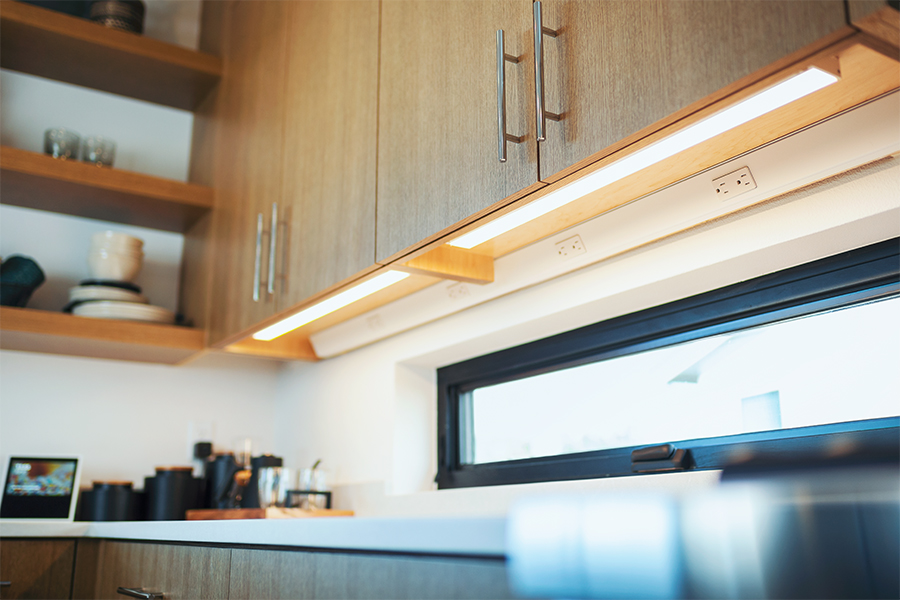
6500K lighting is a type of cool white light that has a bluish tint. This type of lighting is commonly referred to as “natural white” because it closely resembles the color temperature of natural daylight. This makes it ideal for spaces that require bright and natural-looking light.
Advantages of using 6500K lighting in your space:
- Provides a natural-looking light: 6500K lighting provides a bright and natural-looking light that is similar to daylight. This makes it ideal for spaces such as photography studios and workshops, where color accuracy and natural lighting are important.
- Enhances contrast and visibility: 6500K lighting enhances contrast and visibility, making it easier to see details and distinguish colors. This makes it ideal for spaces such as laboratories and factories, where precision and accuracy are important.
- Promotes a sense of alertness: Like 5000K lighting, 6500K lighting promotes a sense of alertness and productivity. This makes it ideal for workspaces such as offices and classrooms, where people need to stay focused and alert.
- Ideal for outdoor lighting: 6500K lighting is ideal for outdoor lighting because it provides a bright and crisp light that enhances visibility and promotes safety.
Disadvantages of 6500K lights
- Can appear too cool: 6500K lighting can be too cool for some people, especially in spaces where a warmer or softer light is desired. This can create a sterile and unwelcoming environment, which may not be ideal for spaces such as living rooms or bedrooms.
- May affect sleep: Exposure to bright and cool light can affect your circadian rhythm and make it difficult to fall asleep at night. This makes 6500K lighting less ideal for spaces such as bedrooms and relaxation areas.
You may also like: 4000K vs 5000K LED Color Temperature Comparison
5000K vs 6500K Lighting: Detailed Comparison
| Kelvin Color Temp | 5000K | 6500K |
| Lighting Appearance | Daylight | Natural White |
| Room Ambience | Warm and Welcoming | Energetic and Invigorating |
| Best Rooms | Entryway, Outdoor Areas, and Bathrooms | Garages, Basement, Workshop Areas |
| Best Fixtures | Overhead Lighting, Vanities, and Accent Lamps | Security Lighting, Task Lighting, and Shop Lighting |
When it comes to choosing between 5000K and 6500K lighting, it’s important to consider the specific needs of your space. Here are some key differences between the two types of lighting:
Color temperature
The main difference between 5000K and 6500K lighting is the color temperature. While both types of lighting are considered cool white, 5000K lighting has a slightly warmer tone with a slight blue tint, while 6500K lighting is cooler with a stronger blue tint.
Brightness
Both 5000K and 6500K lighting are bright and crisp, but 6500K lighting is slightly brighter and more intense than 5000K lighting.
Applications
5000K lighting is ideal for indoor spaces such as offices, studios, and workshops, where bright and crisp lighting is needed. It’s also great for outdoor spaces such as parking lots and garages, where security is a concern. 6500K lighting is ideal for spaces that require natural-looking light, such as photography studios and laboratories, and for outdoor areas where brightness and visibility are important.
Mood and ambiance
5000K lighting provides a modern and clean look, while 6500K lighting provides a cooler and more natural look. In terms of mood and ambiance, 5000K lighting can create a more upbeat and energizing atmosphere, while 6500K lighting can create a more calming and relaxing atmosphere.
Sleep and circadian rhythm
Exposure to bright and cool light, such as 6500K lighting, can affect your circadian rhythm and make it difficult to fall asleep at night. This makes 5000K lighting a better choice for spaces such as bedrooms and relaxation areas.
Also read: 2700K vs 3000K – How to Choose Lighting Color?
Which is Best 5000K or 6500K Lighting?
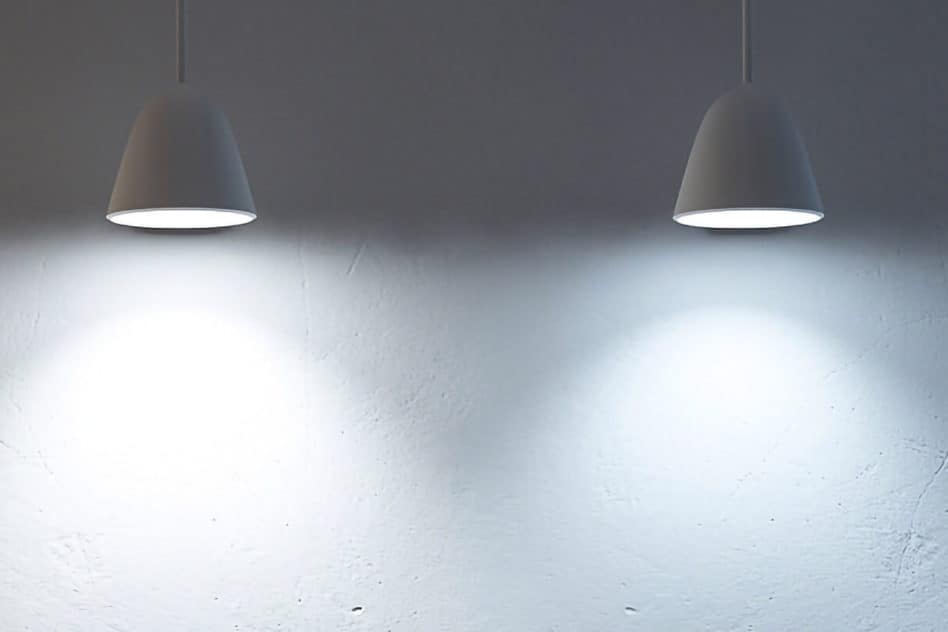
When it comes to choosing between 5000K and 6500K lighting, there is no one-size-fits-all answer. Both types of lighting have their own advantages and disadvantages, and the best choice will depend on the specific needs of your space.
Here are some key factors to consider when deciding which type of lighting is best for you:
Purpose of the space: The purpose of the space will play a significant role in determining the best lighting. For example, if you are looking to enhance productivity in a workspace such as an office or workshop, 5000K lighting may be the better option. If you are looking for natural-looking light in a photography studio or laboratory, 6500K lighting may be the better option.
Color accuracy: If color accuracy is important to you, such as in a photography studio or laboratory, 6500K lighting may be the better option. It provides natural-looking light that closely resembles daylight, which can enhance color accuracy and visibility.
Mood and ambiance: The type of lighting you choose can significantly impact the mood and ambiance of a space. If you are looking for a more calming and relaxing atmosphere, 6500K lighting may be the better option. If you are looking for a more energizing and upbeat atmosphere, 5000K lighting may be the better option.
Personal preference: Ultimately, personal preference will play a significant role in determining which type of lighting is best for you. Some people may prefer the cool and natural-looking light of 6500K lighting, while others may prefer the warmer and slightly softer light of 5000K lighting.
You may also like: 3000K vs 4000K Color Temperature Lighting Difference
Conclusion
In conclusion, choosing between 5000K and 6500K lighting depends significantly on the intended application and the environment in which the lighting will be used. Both color temperatures fall within the “daylight” spectrum, but they serve different purposes and create distinct visual effects. 5000K lights produce a bright, crisp white light that closely resembles morning daylight. This quality makes them particularly suitable for environments such as offices, classrooms, and other settings where a clean, invigorating light is needed to enhance focus and productivity. The neutral quality of 5000K light also makes it a good choice for areas where accurate color perception is crucial but where the intense blue of higher color temperatures might be less desirable.
On the other hand, 6500K lighting, which mimics the bright noon daylight, has a cooler, more bluish-white hue. This color temperature is often preferred in design and art settings where a light that closely approximates north-facing natural light is beneficial. Additionally, 6500K is ideal for retail spaces and other environments where a vibrant, very bright light can help make colors pop, which is advantageous for tasks involving intricate details or color matching. However, for residential settings, this intensity of light might not be as comfortable, potentially creating an environment that feels too stark or sterile. Ultimately, the best light color between 5000K and 6500K is determined by balancing the specific needs of the task at hand with the psychological and aesthetic impacts of the light, ensuring that the chosen lighting enhances both the functionality and the mood of the space.

